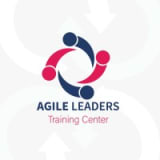This informal CPD article, ‘Return on Investment in Training: Embedding Learning and Ensuring Sustainability’, was provided by Dr. Tarik Albitar, Managing Partner at Agile Leaders Project Management Services, a group of training experts based in the United Arab Emirates who have 20 years of experience in the various types of vocational training and development.
Traditionally, the implementation and embedding of learning has been at the heart of effective training and development activities. As L&D professionals, we need to focus our attention on providing activities and creating the right learning environment that benefits the organization most. This includes changing behaviour and making a difference; hence, measures should be in place that capture the results.
This draws the attention away from measuring the Immediate Impact to ensuring Long-Term Success
Checking for learning and knowledge of staff immediately after a training event is good and should be encouraged, However, it does not answer these real questions:
- What are your staff doing with the learning?
- How are they changing their behaviour?
- What are they changing at work?
- What are they trying out?
- Where's their implementation plan?
- How are they going to turn the knowledge into reality?
More importantly checking for learning and knowledge of staff immediately after a training do not ensure that learners can apply their new skills back at work.
So, what is Missing?
For several decades, the Evaluation Model developed by Donald Kirkpatrick remained the standard in the industry for evaluating training programs at four levels: Reaction, Learning, Behaviour, and Results. Jack Phillips then added a fifth level that deals with Return on Investment, to express the financial impact of said training.
However, even in organizations that conduct such rigorous cycles of evaluation, the analysis typically stops when the ROI has been calculated and the event has been determined to be a "success" or not. In this, the approach misses a process for ensuring that the learning has a lasting impact.
Addressing The Missing Level: Learning Sustainability
Thus, sustainability is considered as the missing level in training. This missing level ensures making a lasting impact on business outcomes and creating legacy assets from trainings.
To find missing level an organization must:
- Build systems and structures that provides ongoing support to the implementation of new skills and knowledge over time.
- Design Follow-up Programs: Contemplative follow-up sessions and refresher courses are meant to reinforce learning and iron out problems employees face during the implementation phase.
- Track and Revise: Monitoring of the long-term impact of the training effectiveness should continue and the overall structure of support be ready to be adapted as needed in a manner that will ensure continuous relevance and impact.
- Embed learning in daily operations: make the new skills and knowledge part of one's standard operating procedures and everyday routine.
- Promote a learning culture: promote continuous learning and a culture of improvement that motivates workers to keep enhancing their abilities.
- Harness technology: provide on-going learning and support with the help of technology encapsulating online resources, forums, and learning management systems.
- Measure sustainability.
So, how can we Measure sustainability?
- The extent to which workers are retaining and building on the acquired skills over time by tracking their long-term performance.
- Permanent improvement of business metrics: productivity, efficiency, employee engagement, etc.
- Eliciting feedback regularly regarding relevance and effectiveness of the training and follow-up support from the employee.
Conclusion
Professionals say effective training and development go beyond immediate ROI. They include embedding the learning in the workplace, supporting employees as they apply new skills, and measurement of the impact implemented continuously. A focus on sustainability would ensure that the training events, as organized by organizations, result in actual changes that are turned into legacy assets to drive long-term performance and growth. Such an approach maximizes the value for money from every training event while building a resilient and capable workforce, fit and ready to meet future challenges.
We hope this article was helpful. For more information from Agile Leaders Project Management Services, please visit their CPD Member Directory page. Alternatively, you can go to the CPD Industry Hubs for more articles, courses and events relevant to your Continuing Professional Development requirements.













